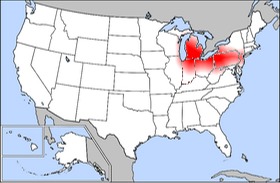History of the United States (1980–1991)
== History of the United States (1980–1991) ==
The history of the United States from 1980 to 1991 encompasses a period of significant political, economic, and social change. This era saw the rise of the Reagan Administration, the end of the Cold War, and the beginning of the Information Age.
Reagan Administration (1981–1989)[edit | edit source]
Ronald Reagan was elected as the 40th President of the United States in 1980, defeating the incumbent Jimmy Carter. Reagan's presidency was marked by a conservative shift in American politics, with a focus on reducing the size of the federal government, cutting taxes, and increasing military spending. This period is often referred to as the Reagan Era.
Economic Policies[edit | edit source]
Reagan implemented a series of economic policies known as Reaganomics, which aimed to reduce inflation and stimulate economic growth through tax cuts, deregulation, and a reduction in government spending. These policies were controversial and had mixed results, with supporters claiming they revitalized the economy and critics arguing they increased income inequality.
Foreign Policy[edit | edit source]
Reagan's foreign policy was characterized by a strong anti-communist stance. He increased military spending and took a hard line against the Soviet Union, famously dubbing it the "Evil Empire." His administration supported anti-communist movements worldwide, including the Contras in Nicaragua and the Mujahideen in Afghanistan.
End of the Cold War[edit | edit source]
The late 1980s saw significant changes in the global political landscape, leading to the end of the Cold War. The Soviet Union began to collapse under the weight of economic problems and political reforms initiated by Mikhail Gorbachev, such as glasnost and perestroika. The fall of the Berlin Wall in 1989 symbolized the end of communist control in Eastern Europe and the eventual dissolution of the Soviet Union in 1991.
George H. W. Bush Administration (1989–1993)[edit | edit source]
George H. W. Bush succeeded Reagan as president in 1989. His administration continued many of Reagan's policies but faced new challenges, including the Gulf War and a recession in the early 1990s.
Domestic Policies[edit | edit source]
Bush's domestic policies included efforts to address the budget deficit and the passage of the Americans with Disabilities Act of 1990, which prohibited discrimination based on disability.
Foreign Policy[edit | edit source]
Bush's foreign policy was marked by the successful prosecution of the Gulf War in 1991, where a coalition of nations led by the United States expelled Iraq from Kuwait. This period also saw the formal end of the Cold War and the establishment of new relationships with the former Soviet states.
Cultural and Technological Changes[edit | edit source]
The 1980s and early 1990s were also a time of significant cultural and technological change. The rise of personal computers and the early development of the Internet began to transform American society. Popular culture saw the emergence of new music genres like hip hop and the dominance of MTV in the music industry.
Related Pages[edit | edit source]
- Ronald Reagan
- Reaganomics
- Cold War
- George H. W. Bush
- Gulf War
- Americans with Disabilities Act of 1990
- Berlin Wall
- Mikhail Gorbachev
- Information Age
Search WikiMD
Ad.Tired of being Overweight? Try W8MD's physician weight loss program.
Semaglutide (Ozempic / Wegovy and Tirzepatide (Mounjaro / Zepbound) available.
Advertise on WikiMD
|
WikiMD's Wellness Encyclopedia |
| Let Food Be Thy Medicine Medicine Thy Food - Hippocrates |
Translate this page: - East Asian
中文,
日本,
한국어,
South Asian
हिन्दी,
தமிழ்,
తెలుగు,
Urdu,
ಕನ್ನಡ,
Southeast Asian
Indonesian,
Vietnamese,
Thai,
မြန်မာဘာသာ,
বাংলা
European
español,
Deutsch,
français,
Greek,
português do Brasil,
polski,
română,
русский,
Nederlands,
norsk,
svenska,
suomi,
Italian
Middle Eastern & African
عربى,
Turkish,
Persian,
Hebrew,
Afrikaans,
isiZulu,
Kiswahili,
Other
Bulgarian,
Hungarian,
Czech,
Swedish,
മലയാളം,
मराठी,
ਪੰਜਾਬੀ,
ગુજરાતી,
Portuguese,
Ukrainian
Medical Disclaimer: WikiMD is not a substitute for professional medical advice. The information on WikiMD is provided as an information resource only, may be incorrect, outdated or misleading, and is not to be used or relied on for any diagnostic or treatment purposes. Please consult your health care provider before making any healthcare decisions or for guidance about a specific medical condition. WikiMD expressly disclaims responsibility, and shall have no liability, for any damages, loss, injury, or liability whatsoever suffered as a result of your reliance on the information contained in this site. By visiting this site you agree to the foregoing terms and conditions, which may from time to time be changed or supplemented by WikiMD. If you do not agree to the foregoing terms and conditions, you should not enter or use this site. See full disclaimer.
Credits:Most images are courtesy of Wikimedia commons, and templates, categories Wikipedia, licensed under CC BY SA or similar.
Contributors: Prab R. Tumpati, MD





